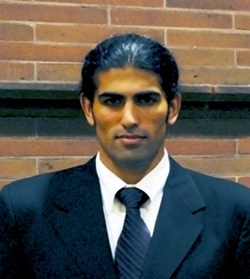Cell Phones in the Classroom? LOL
Nabeel Ahmad, who received his doctorate in Instructional Technology and Media in May, and Dominic Mentor, a doctoral candidate in the same program, are teaching the unique course that explores the instructional applications of the ever-present mobile phone. Why? Because students use the devices not just as phones, but as cameras, notebooks, maps, games, calculators and timepieces, Ahmad says. “They are such an ingrained part of their lives. Why shouldn’t they be used to learn?”
Despite their ubiquity, cell phones are banned from many schools out of concern that they may distract students or make it easier to cheat on exams. But no less an education advocate than Secretary of Education Arne Duncan believes that mobile phones can be a powerful educational tool that captures the way children learn and communicate. And cell phones have the added advantage of being inseparable from their youthful owners.
“Kids lose lots of things, but they don’t lose their cell phones,” Duncan said in a recent interview. “Why shouldn’t we be thinking about teaching students using mobile phones?”
Respecting cell phone bans for the time being, Ahmad and Mentor are teaching educators ways to use cell phones outside the classroom. For relatively low cost—much less than the cost of laptop computers—schools could outfit every child with a cell phone who doesn’t already have one, enabling students on a field trip, for example, to use a geographic positioning system to map their route, snap pictures with their cell phone cameras, upload the photos to a Web site and create and distribute a graphical and textual report of what they saw. They could gather scientific data like water or air temperature, precipitation or vegetation counts, use cell phones to enter the data on to a Web site, then graph it, chart it, and turn it into a report. For homework, students could write fiction, nonfiction or poetry, on their own or in teams. They could even create art.
Cell phones that can handle text messaging can serve as portable homework helpers. At a recent workshop at TC, Ahmad and Mentor demonstrated ChaCha, a newfangled search engine that receives a text question (such as, “What is cytoplasm?”) and routes it to a trained guide knowledgeable in that subject. Within minutes, the guide responds with a text answer of 160 characters or less.
Wireless technology can also be used in testing and assessment. With software from developer Wireless Generation, teachers in 2,000 school districts across the country are using the Palm Pilot personal desk assistant to assess and track reading skills, according to Greg Gunn, the company’s chief scientist and cofounder, who recently spoke to Ahman and Mentor’s class. TC’s own Herbert Ginsburg, the Jacob H. Schiff Professor of Psychology and Education, helped Wireless Generation develop a math assessment tool. And the company recently launched a new product, Burst Reading, which analyzes the assessment data and generates teaching strategies every 10 days that are adapted to students’ needs.
Ahmad and Mentor hope the day comes when school systems will lift their bans, and a routine part of entering a classroom will be uploading data from cell phones instead of shutting them off. They believe cell phones are a good way to get kids interested in learning. “Cell phones engender portable communities,” says Mentor. “People feel socially connected by means of texting. There is an emotional reward to being connected.”
For more information about mobile phone learning, contact Ahmad at na2189@columbia.edu or Mentor at djm2123@columbia.edu.
Published Friday, Aug. 14, 2009
